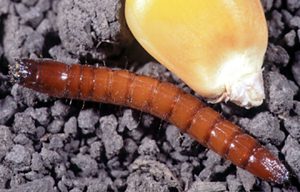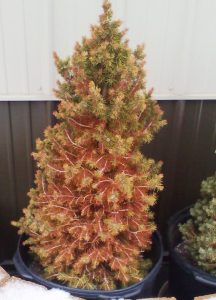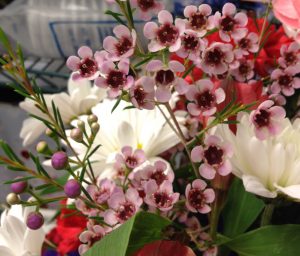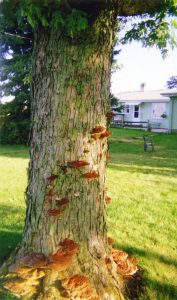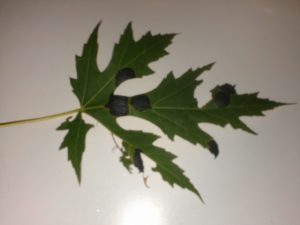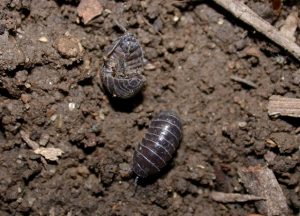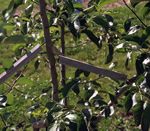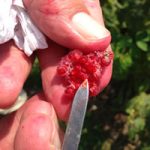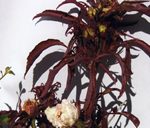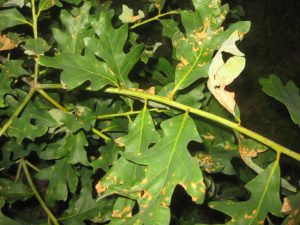In the Grow (Q & A)
The following question and answer columns are currently written by B. Rosie Lerner, Purdue Consumer Horticulture Extension Specialist and are distributed to news media around the state by the Purdue University Agricultural Communications. Columns from June 1995 - January 2006 were authored by Bev Shaw, Advanced Master Gardener.
Question & Answer
Q. I hope you can help me. I like to plant a garden. My problem is my potatoes. They develop holes in them later on in their development. These holes are about a quarter-inch in size and about a quarter-inch deep. I don’t find bugs or anything else on them, so maybe it is the soil. I have rotated my crops, have tried different kinds of potatoes and, last year, and tried a kind that […]
Question & Answer
Q. I am sending you some pictures of my shrubs that are in front of my business. This winter was very difficult on everyone and seems to have taken its toll on my shrubs. I think I know what your answer is going to be. But here goes! The foliage that has turned brown/rust color is on the front of all four shrubs. The backs are not as bad, since they were against the building. […]
Question & Answer
Q. I recently received a flower bouquet with some pretty blossoms I do not recognize. Do you know what these might be? A. Known as wax flower in the florist trade and botanically as Chamelaucium, this plantis native to Australia. The star-shaped petals come in shades of white, pink and lavender and some bi-colors. The needle-like, citrus-scented foliage makes a nice filler material for floral arrangements. This shrubby plant is hardy only to about 20 […]
Question & Answer
Q. Enclosed photo is of a soft maple about 50-55 years of age. These brownish growths began a few years ago but were much smaller and fewer. This year they seem to have multiplied by 10 times. I’m sure the tree is doomed. Three soft maples were in our yard when we moved in 45 years ago. Will the other two become infected? – R.W., Crawfordsville, Ind. A. The good news is that the brown […]
Question & Answer
Q. We have several maple trees in our neighborhood afflicted with this black spot (see attached photo) last year. We’re looking for information on cause, prevention, health risk factors (to the trees), treatment and long-term prognosis for the infected trees. A. While I can’t confirm a diagnosis from this photo alone, a fungal disease called tar spot would be a good guess. Tar spot is a common disease on silver maple and is primarily […]
Question & Answer
Q. Last year was our first year for mature, pickable strawberries. They were bountiful and delicious, but it was hard to get to them before pillbugs did, even by picking daily. Do you recommend any tips or food-safe treatments to keep these or other pests away? A. It is so very frustrating when insect pests and critters beat us to the harvest! Pillbugs are small, gray creatures with seven pairs of legs; they roll themselves […]
Question & Answer
Q. We have a Honeycrisp apple tree that is 2-3 years old. It is growing well, but straight up. It has approximately doubled in height in the year since we planted it. My question is: Can I prune the top back to make the tree less tall and bushier? I know not to do that with maple trees, but don’t know about apple trees. A. The quick answer is do NOT prune the top; this […]
New Pest Identified in Raspberries
Correction to September 5 In The Grow New Pest Identified in Raspberries I just learned from a couple of observant colleagues that the insect pest described in raspberry fruits in last week’s “In The Grow” column is most likely a new pest, the Spotted Wing Drosophila, that has recently appeared in Indiana. Here is the question and the amended response. Thanks to my colleagues for catching this! – Rosie Lerner Q. I am just sick […]
Question and Answer
Q. I have several rose bushes started from a rose that has been in our family for five generations. My mother also had a bush started from the original. Two years ago, her rose started getting the red, narrow, twisted foliage as pictured. The rose eventually died. I have the only remaining plants, and one of my three bushes now has the same problem. Normal and abnormal foliage can come off the same main cane. […]
Orchids, Tomato Plants, & White Oak
Q. I would like to know how to care for a potted orchid I received on Mother’s Day. I don’t know anything about them or what to expect. A. Orchids belong to a large family of plants – there are over 20,000 species and more than 100,000 cultivars! There are four basic types of orchids. The proper temperature, watering and fertilizing schedules vary, depending on the type. Most orchids sold as houseplants are classified as […]
